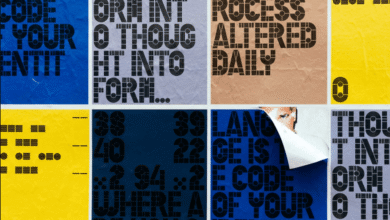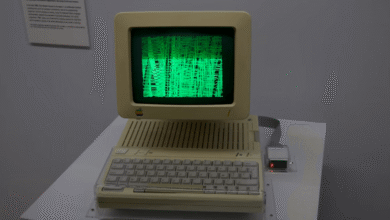What Is Dihward? A Modern Tech Concept Explained

In recent years, the term “dihward” has surfaced in various online discussions, research documents, and niche technological forums. Despite its emerging presence, many individuals are still unfamiliar with what dihward actually is, what it represents, and why it matters. This article provides a comprehensive look at dihward, examining its origins, primary applications, and relevance in modern industries and culture. Whether you’re a student, researcher, or someone with a general interest in trending terms and innovations. This guide will help you understand the depth and breadth of dihward‘s and its supported contexts.
Origins and Etymology of Dihward
The term dihward does not have a commonly acknowledged etymological history in traditional linguistic databases. However, based on its construction and usage patterns, it appears to be a neologism. A newly coined term that has found relevance in niche areas such as tech development, AI architecture, or even gaming environments. It’s speculated that “dihward” could be a portmanteau or acronym derived from specific technical terminologies. Potentially signifying a process, framework, or digital tool. Though not yet standardized in academic lexicons, its presence in specialized communities suggests a growing cultural and technical impact. Understanding the foundation of dihward allows us to trace its expansion and explore the significance of its supported keywords and contexts.
Key Applications of Dihward in Technology
One of the main areas where dihward has gained traction is in the technology sector, particularly in digital architecture, software development, and AI operations. In these contexts, dihward is often described as a supporting structure or protocol that enhances computational efficiency, data alignment, or workflow automation. For instance, some developers refer to dihward as a “dynamic integration hardware-routing directive” — suggesting its use in routing computational tasks dynamically based on data loads and performance criteria.
Moreover, dihward can be linked to distributed networks where digital assets or processing tasks need to be managed across multiple servers or nodes. In such systems, dihward protocols may help in maintaining synchronization, optimizing data throughput, and reducing latency. Its influence might be analogous to how middleware operates in traditional IT infrastructures. Offering a standardized layer between the OS and applications, ensuring smooth interaction.
In the realm of AI models, dihward may serve as a framework to handle multi-layered processing, guiding input-output relations more efficiently. As AI grows more complex, tools like dihward — even if informal or conceptual in nature — are crucial to evolving discussions about optimization and innovation.
Dihward in Creative and Digital Media
Outside pure technology, dihward has found a voice in creative and digital media spaces. In these environments, dihward is often associated with design systems, interactive platforms, and virtual environments. Designers might refer to a dihward’s layout when describing dynamic user interfaces that adapt based on screen size, user behavior, or content density. In multimedia production, dihward systems could refer to adaptive rendering techniques or animation pipelines that manage visual complexity in real time.
In the gaming industry, for example, developers talk about dihward dynamics when referring to intelligent NPC behaviors or modular terrain rendering techniques. The key appeal here is adaptability — the ability for a system to evolve based on internal or external variables. Which mirrors many properties of emerging AI and machine learning infrastructures. Supported keywords associated with this include “adaptive systems,” “procedural generation,” and “real-time architecture”, all of which underline the flexible, scalable nature of dihward’s-related concepts.
The Cultural Relevance of Dihward
Like many contemporary buzzwords, dihward is not just a technical term; it’s increasingly a cultural symbol for modernity, complexity, and digital fluency. In online forums, memes, and digital artwork, dihward has taken on a slightly abstract or philosophical meaning — representing systems that evolve beyond traditional control, where the human role shifts from operator to observer. This metaphorical use points to a broader cultural trend. The shift from static to dynamic models in everything from storytelling to social media design.
Dihward is also becoming a catchphrase of sorts in certain internet subcultures, often appearing as an inside joke or symbolic reference. Some compare it to how the term “cyberpunk” evolved — starting in fiction and later symbolizing an entire aesthetic and technological philosophy. In this way, dihward’s is slowly being elevated to more than just a system or framework. It’s becoming shorthand for a future-forward mindset, one that embraces complexity, decentralization, and intelligent automation.
Dihward in Education and Research
Educational institutions and researchers have started to reference dihward in their work — not necessarily as an official doctrine. But as a term denoting advanced problem-solving, systems thinking, and integrative design. In STEM fields, dihward’s modules have been proposed as teaching tools or conceptual frameworks to help students understand multi-disciplinary relationships. Such as how physics interfaces with machine learning, or how design thinking can impact engineering workflows.
In some case studies, dihward-based curriculum models are used to encourage collaborative innovation. Where students are prompted to build systems that can adapt, react, and optimize autonomously. These projects may be entirely theoretical, but the use of dihward’s terminology helps to bridge the gap between abstract thinking and concrete implementation. It’s also noteworthy that the term has made minor appearances in academic journals that explore systems theory. Emergent technologies, and meta-architecture. Suggesting that its usage is slowly moving from conceptual jargon to structured inquiry.
Challenges and Criticisms of Dihward
Despite its growing popularity, dihward is not without its critics. One of the main challenges is its ambiguity — the fact that it lacks a universally agreed-upon definition. This has led some professionals to dismiss it as jargon or pseudo-terminology, especially in cases where its meaning is used inconsistently. Skeptics argue that without proper standardization or scholarly backing. Dihward risks becoming a filler term — one that sounds impressive but lacks actionable depth.
Moreover, the abstract nature of dihward’s can be both a strength and a weakness. While it allows for flexibility and interdisciplinary usage, it also opens the door to misuse, misinterpretation, and overextension. Some warn against over-reliance on such loosely defined concepts, particularly in environments that require rigorous validation. Such as scientific research or critical software development.
There are also concerns about intellectual property. If dihward evolves into a more formal framework or methodology, who owns the rights to its structure or naming convention? How will it be regulated, if at all? These are valid questions that will need to be addressed if the concept continues to grow in popularity and application.
The Future of Dihward
Looking ahead, the future of dihward appears promising but uncertain. Its relevance will largely depend on whether communities — both technical and cultural — decide to formalize its meaning or continue using it as a flexible metaphor. As more developers, educators, and creatives engage with dihward-based ideas. It may evolve into a recognized toolset or a certified methodology in its own right.
One likely trajectory is that dihward becomes embedded in AI training models, software design kits (SDKs), or open-source frameworks. In such cases, it could serve as the backbone of dynamic applications — from self-adjusting algorithms to user-personalized platforms. Another potential path is academic recognition, where dihward’s models are explored and refined through scholarly research. Leading to practical implementation in engineering, architecture, and digital design.
Whatever path it takes, dihward serves as a mirror to our current digital transformation — symbolizing the shift from linear, static processes to agile, self-improving systems. It reminds us that language and innovation evolve together. Often unpredictably, in response to the needs and imaginations of the communities that drive them.
Also Read: Stripper Names Fun Sexy & Iconic Picks
Conclusion: Why Dihward Matters
In conclusion, dihward may still be in its early stages of development as a concept, but its growing presence in digital. Dreative, and academic communities makes it worth paying attention to. Whether used as a technical framework, a cultural symbol. Or an educational tool, dihward’s represents a move toward more adaptive, intelligent, and fluid systems thinking. By understanding its applications and potential, we equip ourselves to engage more meaningfully with the innovations of tomorrow.
As with all emerging terms, the value of dihward will ultimately be determined by how it is used — thoughtfully, rigorously, and creatively. And in that sense, it already has a strong foundation to build on.




